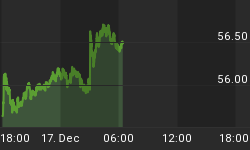On Friday March 14, 2008, the US government, acting through the Federal Reserve, took steps to prop up the 85-year old investment bank Bear Stearns. Originally thought to be the end of the institutions woes, regulators gave Bear that weekend to find a buyer for the firm, as it had become insolvency and was on the verge of failing, which would have created a massive downdraft in the markets and potentially a wave of bank failures that could've ground the global financial system to a halt.
Executives from Bear Stearns and other banks, along with Fed and Treasury officials worked feverishly over the weekend to find a buyer for the firm. Ultimately bank titan JP Morgan Chase structured a deal to purchase Bear for less than the firm's Manhattan headquarters was worth at the time.
The government's decision to rescind offers of support left investors around the world, as well as Bear Stearns 13,000+ employees, in shock. When all was said and done, many questions remained about what went wrong, and why this once-great institution was allowed, even encouraged, to collapse, especially when other institutions like AIG were provided substantial, lasting financial support.
The real story of why Bear was allowed to fail can be traced back to a decade before its demise, and the downfall of a young, world-class hedge fund, Long-Term Capital Management (LTCM).
Founded in 1994, LTCM was headed by John Meriwether, who had just left his position at the head of bond trading for investment bank Salomon Brothers following a regulatory scandal involving one of his traders. With him at LTCM, Meriwether had 10 partners, including several of his brightest former colleagues at Salomon.
The management team at LTCM was thought to be the best ever assembled. It included two future Nobel Prize Winners, seven PhD's (six of which were from MIT), four current or previous Harvard professors, one Vice Chairman of the Fed, and a combined 250 years of experience in finance and investments.
The other big thing that LTCM had a lot of, which proved to be its undoing, was leverage. When they founded the firm, partners were able to raise just over a billion dollars in capital. They then "leveraged up" (borrowed a TON of money) and began trading.
By 1998 LTCM had achieved several years of fantastic returns, building their equity capital up to roughly $4 billion, and had borrowed enough money to amass a portfolio worth over $100 billion - an incredible leverage ratio of 25:1.
In September of 1998 Russia defaulted on their debt, an event that LTCM's partners, mostly academics, never could have imagined. Their portfolio fell apart almost overnight.
That same month the heads of nine of the biggest (at the time) Wall Street banks were called into the Fed to arrange a bailout of LTCM. As many people have lately been up in arms over the government's 2008 bailout of banks, this was even more controversial. Regulators weren't bailing out a bank, but a hedge fund engaged in speculation on behalf of very wealthy clients.
The fear, though, was that without some form assistance, Long-Term Capital Management would be forced into bankruptcy and the liquidation of its portfolio so quickly that it would destabilize the market. With a $100 billion portfolio to unwind, the fire-sale that would ensue would surely push stock prices down, which would hurt smaller investors and also cause several banks to fail, as LTCM owed many of them large sums of money.
In the bailout, which ultimately involved more than a dozen Wall Street banks, there was one lone institution that refused to participate or provide any kind of help to LTCM: Bear Stearns.
Less than a decade later, the tables had turned on this former powerhouse. Rather than being the puppet-master, deciding whether to help a struggle firm or simply let them perish, now Bear needed the help, and desperately.
Wall Street, though, is fond of team players. As cut-throat as the industry can sometimes be, banks have long memories of both favors and faults. Put simply, 2008 provided other banks with their opportunity to get payback with Bear Stearns for having to shoulder the LTCM bailout a decade earlier. Even then-Treasury Secretary Hank Paulson was an alumnus of Goldman Sachs, who was involved with the LTCM debacle.
There's surely more to the story of Bear Stearns' fall from grace and final days that is largely unknown, and many of the details may never be revealed. We can be certain, though, that there's more than meets the eye in this cloak-and-dagger tale.















